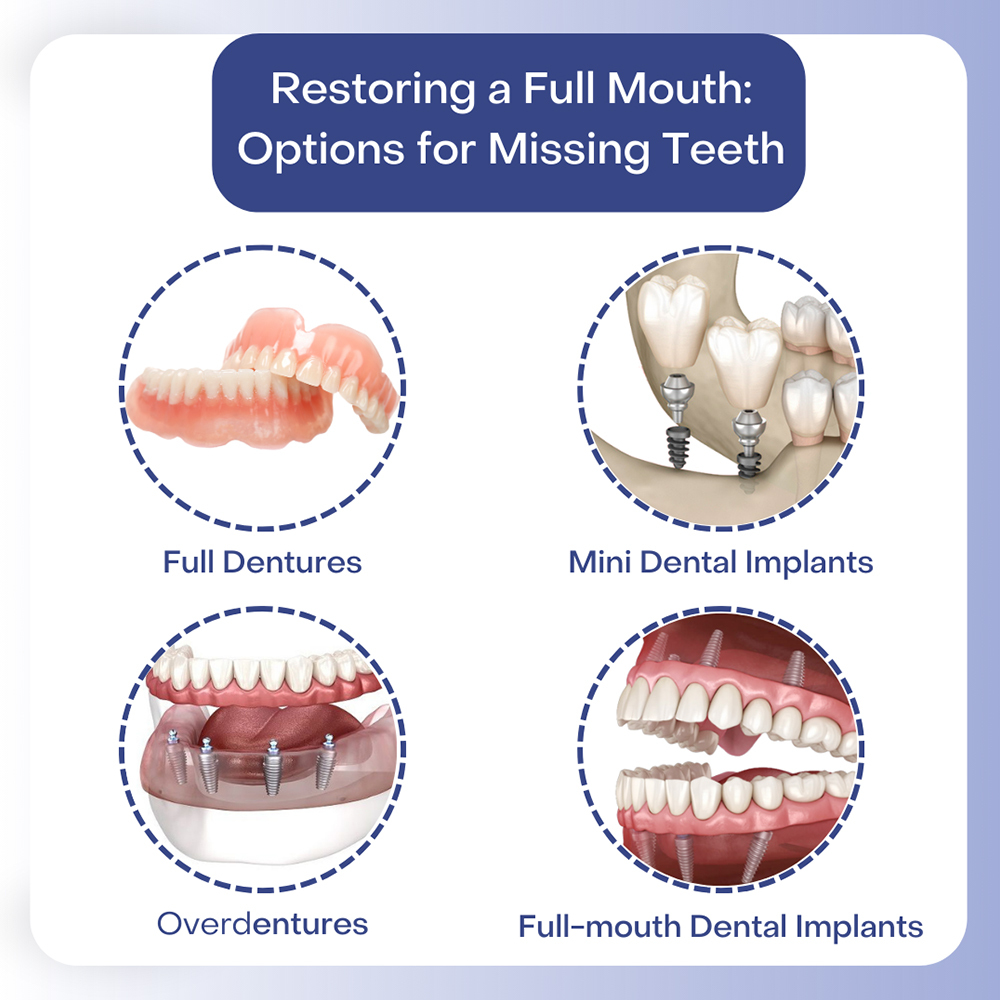Indicators on Dental Sense You Need To Know
Table of ContentsDental Sense Things To Know Before You Get ThisThe Best Guide To Dental SenseAn Unbiased View of Dental SenseThe Best Strategy To Use For Dental Sense
are medical tools surgically implanted right into the jaw to bring back a person's ability to eat or their appearance. They offer assistance for synthetic (fake) teeth, such as crowns, bridges, or dentures. When a tooth is lost due to injury or disease, an individual can experience complications such as rapid bone loss, defective speech, or changes to chewing patterns that cause discomfort.Dental dental implant systems include a dental implant body and dental implant abutment and may additionally consist of an abutment addiction screw. Wisdom tooth cavity. The oral implant body is surgically put in the jawbone instead of the tooth's root. The oral implant joint is generally connected to the implant body by the abutment addiction screw and prolongs through gum tissues into the mouth to support the connected man-made teeth
(https://www.provenexpert.com/dental-sense/)Framework of The Dental Implant System picking oral implants, speak to your dental provider regarding the potential advantages and dangers, and whether you are a candidate for the procedure. Points to consider: Your overall health is a vital variable in identifying whether you are an excellent prospect for dental implants, for how long it will take to heal, and the length of time the implant might remain in area.
Cigarette smoking may impact the recovery process and lower the lasting success of the dental implant. The healing process for the dental implant body might take numerous months or longer, during which time you generally have a short-lived abutment instead of the tooth. the dental implant treatment: Meticulously adhere to the oral hygiene guidelines provided to you by your dental service provider.
Getting The Dental Sense To Work
Implant failing can result in the demand for an additional surgical procedure to take care of or replace the implant system. Restores the capacity to eat Recovers cosmetic look Aids keep the jawbone from shrinking because of bone loss Protects the health of the surrounding bone and periodontals Aids maintain adjacent (neighboring) teeth stable Enhances quality of life Damage to surrounding natural teeth throughout dental implant placement Injury to the surrounding tissues throughout surgical procedure, such as sinus perforation Injury during surgical treatment (as an example, crack of surrounding jawbone) Poor feature, such as seeming like the teeth do not bite with each other typically An experience that the tooth is loose or turning in position arising from a joint screw loosening up Implant body failing (looseness of the implant body) as a result of systemic infection, which may be a lot more most likely in people with unchecked diabetes due to local infection in bone and gum tissues sustaining the dental implant body because of delayed recovery, which might be much more likely in people that smoke Difficulty cleansing the gum tissues around the dental implant, causing inadequate dental health Untreated gum disease Post-surgical pins and needles because of nerve impingement or damage Constantly alert healthcare companies and imaging service technicians that you have dental implants prior to any kind of magnetic resonance imaging (MRI) or x-ray procedures.
FDA is not familiar with any adverse events reported for MRI or x-ray treatments with oral implants. Oral implants systems are usually made from materials that follow worldwide consensus requirements of the International Organization for Standardization (ISO) or ASTM International. These requirements have information of what makes a secure material.

A dental implant is a framework that changes a missing out on tooth. With screw-like gadgets, the surgeon inserts a dental implant right into the jawbone, and it acts as an anchor for an artificial tooth, called a crown.
Dental Sense - Truths
Some individuals are not eligible for dental implant surgery. It is for dental specialists to operate on individuals with: severe illnessuncontrollable metabolic diseasebone or soft tissue illness or infectionIf these concerns are dealt with, a person can have the surgical treatment. In, oral specialists avoid operating individuals with: If individuals with any one of the above go through dental implant surgical procedure, there is a greater risk of the implant falling short.

Dental dental implant surgical treatment is a tailored procedure. It's not the same for every person. But the adhering to offers a general summary of what you can anticipate your dental professional, dental doctor, periodontist or prosthodontist to do: Position the implant surgically. Offer you time to heal. Attach the post and last crown, bridge or denture.
Next off, your specialist will carefully position the oral implant into your jaw. If your dental implant is near the front of your mouth, your dental practitioner will certainly make a temporary tooth for you to put on until you recover.
Get This Report on Dental Sense
Your copyright can tell you what to anticipate in your situation. Throughout the healing phase, your jawbone should fuse to the dental implant. This procedure, called osseointegration, is essential for security and lasting success. This process can take anywhere from three to nine months. In many cases, it may take longer.
When your dental implant heals, your dental expert can affix the abutment (small adapter post) and your final remediation (crown, bridge or denture). This generally takes concerning one hour to complete and may call for a second minor surgical procedure. You shouldn't feel any kind of pain throughout your oral implant procedure due to the fact that your provider will utilize medication to numb your periodontals.